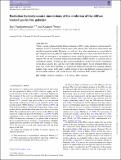Files in this item
Radiation hydrodynamics simulations of the evolution of the diffuse ionized gas in disc galaxies
Item metadata
| dc.contributor.author | Vandenbroucke, Bert | |
| dc.contributor.author | Wood, Kenneth | |
| dc.date.accessioned | 2019-09-11T11:30:07Z | |
| dc.date.available | 2019-09-11T11:30:07Z | |
| dc.date.issued | 2019-09 | |
| dc.identifier | 261123079 | |
| dc.identifier | 4ea0aebf-2a9c-4f3f-b1ea-0adcb878c6ae | |
| dc.identifier | 000482332500032 | |
| dc.identifier | 85074477176 | |
| dc.identifier.citation | Vandenbroucke , B & Wood , K 2019 , ' Radiation hydrodynamics simulations of the evolution of the diffuse ionized gas in disc galaxies ' , Monthly Notices of the Royal Astronomical Society , vol. 488 , no. 2 , pp. 1977-1986 . https://doi.org/10.1093/mnras/stz1841 | en |
| dc.identifier.issn | 0035-8711 | |
| dc.identifier.other | Bibtex: urn:929fb738ce2fd663e8aef420bcacb99e | |
| dc.identifier.other | ORCID: /0000-0001-7241-1704/work/61622254 | |
| dc.identifier.uri | https://hdl.handle.net/10023/18462 | |
| dc.description | BV and KW acknowledge support from STFC grant ST/M001296/1. The equipment was funded by BEIS capital funding via STFC capital grants ST/K000373/1 and ST/R002363/1 and STFC DiRAC Operations grant ST/R001014/1. | en |
| dc.description.abstract | There is strong evidence that the diffuse ionized gas (DIG) in disc galaxies is photoionized by radiation from UV luminous O and B stars in the galactic disc, both from observations and detailed numerical models. However, it is still not clear what mechanism is responsible for providing the necessary pressure support for a diffuse gas layer at kpc-scale above the disc. In this work, we investigate if the pressure increase caused by photoionization can provide this support. We run self-consistent radiation hydrodynamics (RHD) models of a gaseous disc in an external potential. We find that photoionization feedback can drive low levels of turbulence in the dense galactic disc, and that it provides pressure support for an extended diffuse gas layer. Our results show that there is a natural fine-tuning between the total ionizing radiation budget of the sources in the galaxy and the amount of gas in the different ionization phases of the interstellar medium, and provide the first fully consistent RHD model of the DIG. | |
| dc.format.extent | 10 | |
| dc.format.extent | 2844864 | |
| dc.language.iso | eng | |
| dc.relation.ispartof | Monthly Notices of the Royal Astronomical Society | en |
| dc.subject | Methods: numerical | en |
| dc.subject | H ii regions | en |
| dc.subject | ISM: structure | en |
| dc.subject | QB Astronomy | en |
| dc.subject | QC Physics | en |
| dc.subject | DAS | en |
| dc.subject | BDC | en |
| dc.subject | R2C | en |
| dc.subject.lcc | QB | en |
| dc.subject.lcc | QC | en |
| dc.title | Radiation hydrodynamics simulations of the evolution of the diffuse ionized gas in disc galaxies | en |
| dc.type | Journal article | en |
| dc.contributor.sponsor | Science & Technology Facilities Council | en |
| dc.contributor.institution | University of St Andrews. School of Physics and Astronomy | en |
| dc.contributor.institution | University of St Andrews. Centre for Biophotonics | en |
| dc.identifier.doi | 10.1093/mnras/stz1841 | |
| dc.description.status | Peer reviewed | en |
| dc.identifier.grantnumber | ST/M001296/1 | en |
This item appears in the following Collection(s)
Items in the St Andrews Research Repository are protected by copyright, with all rights reserved, unless otherwise indicated.

